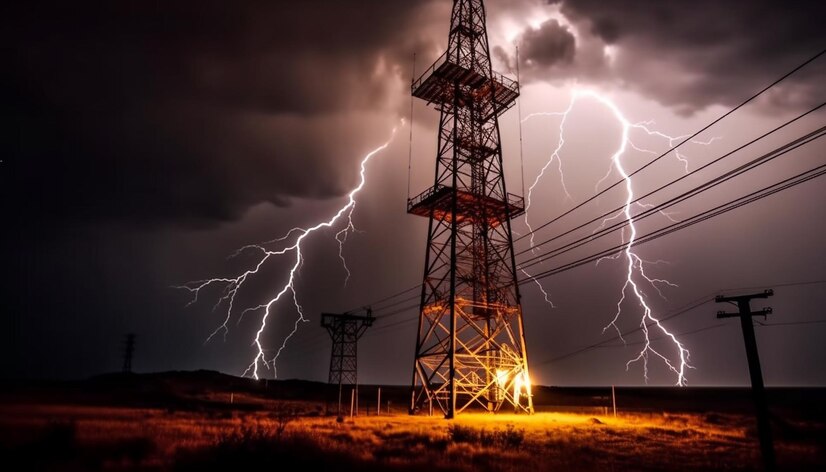
For some customers locking in at a fixed electric rate makes sense. Electricity suppliers offer this option along with the possibility for a variable rate either of which is based on the spot or market price for electricity. Read here about electricity spot prices and utility costs.
Paying the market or spot price each month is risky, but many are willing to take that chance if prices were to drastically drop. Primarily, the answer depends on your usage and your risk tolerance, meaning you should weigh the pros and cons to see where you stand.
When locking in at a fixed rate, essentially the electric provider will set you up with a supply price per kWh for your energy consumption for the entire life of your contract. As with all commodities, the demand dictates the rates at which electricity will be sold.
When there’s a great demand, the cost will be high, but if you’re locked in, you will pay that same rate regardless of the spot price. The savings for fixed-rate plans can be considerable if you get in at the right time.
What Plans Do Energy Providers Offer Consumers
Typically, two types of energy plans are offered to consumers for electricity payments. You can either lock in with a precontracted cost for a set time period referred to as a fixed supply plan or pay as you go using a variable plan. That involves paying your monthly usage according to the current market rate.
Usage plays a vital role in which option you decide to take. Locking in is often the better choice for many people’s lifestyles due to key benefits:
The spot price doesn’t affect the rate; they remain stable
Being locked in keeps your budget predictable and stable. When the market becomes volatile, the fluctuations won’t impact on your household or monthly expenditures. Your price will remain the same for the length of your contract.
The market is complex in how it affects electricity with demand driving the price point. Fuel availability and power transmission difficulties can affect rates as do extreme weather conditions.
The utility bill will be relatively the same
When rates are fixed, the only impact on the utility costs will be your usage. When the rate remains the same, you have greater manageability and a degree of control over the price point.
You can track your usage to see when your demand is highest. If you use energy-intensive products during on-peak times, when the costs are higher, the fixed rate makes more sense than risky higher prices with market fluctuations.
What Is a Variable Rate Electricity Plan
Fortunately, with deregulation, the consumer has the option between a fixed or variable-rate electricity plan. The variable range offers incredible flexibility because it’s based on the market or spot price the electricity supplier pays for energy resources.
That means the costs will fluctuate with the market from one month to the next. You won’t be locked in with a specific time frame or a contract like is the case with a fixed rate plan.
That means if you prefer to find better rates with another provider, you can do so without the possibility of a penalty. Learn details about spot or market pricing at bestestrøm.no/spotpris/ to help with a more informed decision.
Why Do the Prices Fluctuate
The market drives the energy costs with variable rate plans similar to how other commodities work with prices changing as regularly as every day with many variables contributing to the changes including seasonal demands.
As a commodity fuels like natural gas are traded on the market making the purchase price vulnerable to monthly changes.
Electricity prices can change as often as every day, or each hour based on variables including the weather. As the customer, daily shifts aren’t an issue; monthly fluctuations will impact on you when opting for a variable rate plan.
This disallows the ability to develop an adequate budget around other monthly expenditures since the cost is unpredictable. You could see the prices stick around the same spot for a few months, but they could also spike at any moment. You have no absolute control over whether you get a cheap rate or not.
The only effect you will have is on reducing your usage to get the utility bill reduced.
Related: Latest Tech Trends In Electricity Services
How Do You Know If a Variable Rate Is Right for You
If you prefer to pay attention to the spot price and shop your rates without being locked into a contract, the variable rate plan is ideal for you. Nothing is saying you can’t, at some point, jump into a locked rate if it’s a price you can’t beat for a long-term plan.
You can also change electric providers without the threat of penalties. The thing to remember is that if you change due to a high rate with the current electricity supplier, other providers will likely be as high based on the current market conditions.
Go to https://www.sciencedirect.com/science/article/pii/S2210670721005291 for examples of how spot pricing affects electricity rates in Norway.
A priority is to refrain from signing up for the cheapest just because the plan is cheap. Usually, the least expensive option only offers the lowest rates for an introductory period plus will usually have hidden fees and charges.
That can be true with some providers trying to attract consumers. The electricity supplier will offer an enticingly cheap rate, but the price is only discounted for a limited time.
The best way to know if you’re getting the best rate for you and your circumstances is to pay attention to the spot price, find out if the rate you’re offered is ongoing, and monitor your usage. The priority is to sign up for the most suitable option on the market that will meet your individual electricity needs.
Final Thought
Two plans are available from energy providers for consumers, either locking in with a fixed supply plan or choosing a variable rate based on the spot price. When picking a variable rate, the cost will depend on what the electricity supplier pays for energy resources and then retails that cost to you as the customer.
Because the market is volatile, fluctuating as often as every day, sometimes every hour for commodities, your monthly bill can differ each time you get an invoice. It could also remain the same for several months.
It’s unpredictable. One thing you do have some control over is your usage. When you monitor this trying to conserve where you can, the utility costs can be reduced.
Because the market dictates the electricity rates, the suppliers will raise and lower rates unfailingly. If there’s a considerable hike with one due to the market, it happens across the board. Will some providers offer cheaper spot prices than others? Discounts, you’ll need to do your homework.
Read Also:






